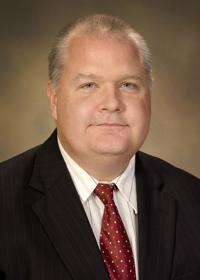When Dr. Gary Vercruysse came to Tucson from Atlanta in 2012, there was no local inpatient burn program here, and patients routinely went to Phoenix for treatment.
Under Vercruysse’s direction, the number of Southern Arizonans getting burn treatment in Phoenix dropped from about 200 people per year to fewer than 10, said Dr. Terence O’Keeffe, interim trauma director at Banner-University Medical Center Tucson, which has Southern Arizona’s sole Level One trauma center for the most serious, life-threatening cases.
Now, five years after he got here, Vercruysse is leaving. He has accepted a job as head of emergency general surgery at the University of Michigan and will transition into the job of director of the burn center at its medical center.
“It was a good opportunity for me to grow as a researcher and to continue to grow as a clinician and to head up a well-endowed, well-staffed burn center with a long history of providing excellent care,” Vercruysse said.
O’Keeffe says Southern Arizonans should not worry about losing local burn care, including for severe cases. The UA, in partnership with Banner Health, is recruiting to hire a burn surgeon to replace Vercruysse, though that process could take several months, O’Keeffe said.
Banner-University Medical Center Tucson will also continue with Vercruysse’s plans to establish a burn center that’s verified by the American Burn Association and the American College of Surgeons, O’Keeffe said.
Currently, 66 verified burn centers exist in the U.S., including the Arizona Burn Center at Maricopa Medical Center, which is the only verified center in the state.
Recruited by Rhee
The Tucson burn program has grown every year for the past five years. The program now regularly admits 250 inpatients per year as well as about 200 patients in the emergency department, and handles more than 1,000 outpatient clinic visits annually — both adults and children — for burns and complex wound care.
The burns they see range from people injured in kitchen accidents and car crashes to firefighters and people with chemical burns. The care includes skin grafting and plastic surgery for scar repair.
Initially, the fledgling program under Vercruysse accepted patients with burns covering 40 percent of their body surface or less, but gradually increased its ability to handle the most severe burns.
“It’s very rare now that we would send someone to Phoenix,” Vercruysse said.
Vercruysse’s burn program added a second surgeon in November 2016 — Dr. Arpana Jain, who came to Tucson following a burn surgery fellowship at University of California-Davis and the Shriner’s Hospital for Children in Sacramento. She specializes in reconstruction surgery for burn scars and pediatric burn care.
“We cannot be all that we want to be with just one burn surgeon,” O’Keeffe said.
Until a second burn surgeon is hired, there may be occasions when people with severe injuries go to Phoenix, though O’Keeffe anticipates few such cases.
Vercruysse came to Tucson from Grady Memorial Hospital in Atlanta, where he was co-director of a regional burn center. He was recruited by former top trauma surgeon Dr. Peter Rhee, who came to Tucson in 2007 and revived a flailing trauma program at the local academic medical center.
Rhee left Tucson last year for a job as medical director at Grady Memorial Hospital’s trauma center.
Under Rhee and Vercruysse, the then-UA Medical Center became the first inpatient burn program in Southern Arizona since Carondelet St. Mary’s closed its unit in 2008. The St. Mary’s program operated for 40 years as both an outpatient and inpatient program.
“He has put in a Herculean effort to build a program here,” O’Keeffe said of Vercruysse. “He has set us well on the path of becoming a verified burn center. We could not have done it without him. He came in on nights, weekends. He’d come in when he wasn’t on call. He has put his heart and soul into this.”
New burn center
O’Keeffe said Banner-University will have 12 beds dedicated to burn patients in a new hospital tower that is under construction next to the existing facility and set to open in 2019.
A dedicated burn unit in the new hospital will allow patients to stay in the same location from admission to discharge, which will provide better continuity of care than they have in the current facility, he said.
At that point, officials will consider becoming a verified burn center, though O’Keeffe anticipates the process will require philanthropic support in order to become reality.
While Banner is providing the physical space, psychosocial support for burn programs often requires a foundation or other charitable support.
”The next logical step is to become a verified burn center,” Vercruysse concurred. “We need not only the physical infrastructure, but ancillary support services.”
Those ancillary services include psychologists and psychiatrists available to the burn center on an as-needed basis, social-service consultation and child-life services for pediatric burn patients.




